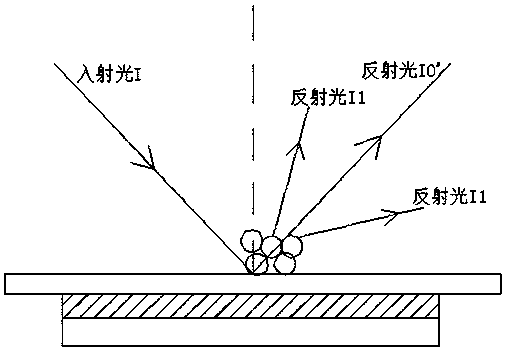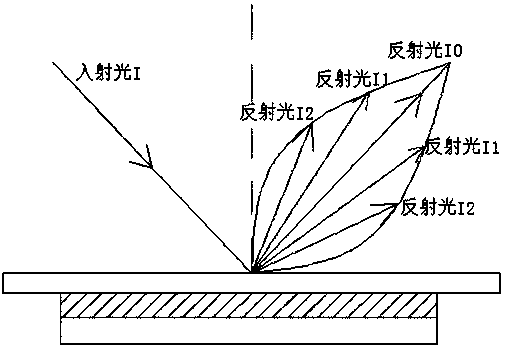Technology for improving visibility of liquid crystal display
A visibility and liquid crystal screen technology, applied in nonlinear optics, instruments, optics, etc., can solve problems such as unclear LCD display and reflected light intensity, so as to improve the signal-to-noise ratio and reduce the cost of use
- Summary
- Abstract
- Description
- Claims
- Application Information
AI Technical Summary
Problems solved by technology
Method used
Image
Examples
Embodiment 1
[0028] Embodiment 1, by figure 1 It can be seen that the overall structure of the liquid crystal display 1 with the touch screen 3, because the touch screen 3 and the liquid crystal display 1 have adopted a full bonding technology for refractive index matching, so that the internal structure between the touch screen 3 and the liquid crystal display 1 The reflected light is very weak, and due to the strong specular reflection brought by the smooth surface of the display device, the observer cannot clearly observe the information on the LCD screen 1, so that the information displayed on the LCD screen 1 cannot be clearly and accurately displayed. Read, thus bringing the user's use defects.
[0029] If the signal-to-noise ratio is used to represent the clarity of the observer's reading information, µ represents the signal-to-noise ratio, W represents the effective information light intensity emitted by the LCD screen 1, and I0 represents the reflected light incident on the observ...
Embodiment 2
[0032] In Embodiment 2, in order to enhance the information visibility of the user, it is necessary to reduce the reflected light intensity I0 as much as possible. This technology adopts AG treatment on the smooth surface of the reinforced glass or the surface of the touch screen 3, that is, to increase the roughness of the surface of the display device, thereby forming a layer of frosted interface on the surface.
[0033] Please refer to the attached figure 2 , the surface after AG treatment actually has a lot of tiny particles. When the incident light I is incident on the AG interface, on the one hand, it can be known macroscopically according to the principle of specular reflection that part of the light still exits along the direction of the original reflected light I0 Go out to form I0', and because there are many tiny particles on the surface, from a microscopic analysis, there will be a part of the light that will go out into the air after multiple reflections and refr...
Embodiment 3
[0034] Example 3, if the number of reflections and refractions increases, the angle deflection relative to the original reflected light I0 will be greater, thus finally forming a specular reflected light with the reflected light I0' as the central axis, accompanied by multiple angles around it. Diffuse light I1, I2, I3...as image 3 shown. If the absorption of the interface and the microparticles is not considered, then it can be considered that the original reflected light intensity I0 is equal to the sum of the reflected light after AG treatment, that is:
[0035] I0= I0'+ I1+ I2+ I3+...Ii; i is a positive integer.
[0036] It can be seen from the above formula that I1, I2, I3 and the component Ii of the diffuse reflection light are all greater than 0, so it can be judged that I0>I0', so that the light is reflected to the observer while keeping the ambient light unchanged. The intensity of reflected light in the eye is reduced.
[0037] After AG processing, the reflected ...
PUM
 Login to View More
Login to View More Abstract
Description
Claims
Application Information
 Login to View More
Login to View More - R&D
- Intellectual Property
- Life Sciences
- Materials
- Tech Scout
- Unparalleled Data Quality
- Higher Quality Content
- 60% Fewer Hallucinations
Browse by: Latest US Patents, China's latest patents, Technical Efficacy Thesaurus, Application Domain, Technology Topic, Popular Technical Reports.
© 2025 PatSnap. All rights reserved.Legal|Privacy policy|Modern Slavery Act Transparency Statement|Sitemap|About US| Contact US: help@patsnap.com



